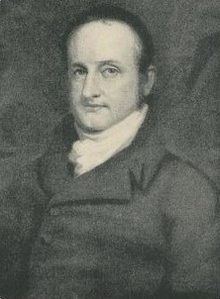Preceded by New seat Preceded by New seat | Succeeded by Seat abolished Name William Van | |
 | ||
Died September 6, 1826, New York City, New York, United States | ||
Succeeded by Samuel Rossiter Betts | ||
William Peter Van Ness (February 13, 1778 – September 6, 1826) was a United States federal judge.
Contents
Early life
William P. Van Ness was born in Ghent, New York to Judge Peter Van Ness (1734-1804), a wealthy lawyer and farmer who owned the property in Kinderhook on which William Van Ness constructed a mansion in 1797. Martin Van Buren later purchased the home and land and renamed the estate Lindenwald. Peter Van Ness is buried on the Lindenwald estate. Van Ness's brothers included U.S. Representative and Washington, D.C. mayor John Peter Van Ness and Vermont governor Cornelius P. Van Ness.
Van Ness attended Washington Seminary and graduated from Columbia College in 1797. After graduating, Van Ness read law in the office of Edward Livingston, attaining admission to the bar in 1800.
Early career
Van Ness practiced law in New York City, Albany, and Hudson from 1800 to 1812.
Van Ness, a friend of Aaron Burr, was an active participant in the 1800 presidential campaign as a vocal supporter of the Democratic-Republican candidates, Burr for Vice President and Thomas Jefferson for President.
In 1801 Van Ness served as a delegate to the New York Constitutional Convention, which was called to amend the state constitution of 1777.
Van Buren completed his legal studies in Van Ness's office in 1802 and became an attorney in Columbia County, New York.
In July 1804, Van Ness served as Aaron Burr's second in Burr's duel with Alexander Hamilton and was present when Burr fatally shot Hamilton.
Judicial career
On May 25, 1812, President James Madison nominated Van Ness to a new seat on the United States District Court for the District of New York. He was confirmed by the United States Senate on May 26, 1812, and received his commission on May 27, 1812. On April 9, 1814, he was reassigned by operation of law to the newly subdivided United States District Court for the Southern District of New York.
In 1818 Congress appointed a special committee to look into the official conduct of Van Ness and his judicial colleague, Matthias B. Tallmadge, who apparently did not work well together. The committee investigated and recommended that no action be taken against Van Ness or Tallmadge.
Career as an author
Van Ness was the author of several political and judicial works, including: Examination of Charges against Aaron Burr (1803); The Laws of New York, with Notes, (with John Woodworth), (2 vols. 1813); Reports of Two Cases in the Prize Court for New York District (1814); and Concise Narrative of Gen. Jackson's First Invasion of Florida (1826).
Family
In 1800, Van Ness married Anne McEvers (1767-1829) in Red Hook. They were members of the Dutch Reformed Church, and the parents of five children:
Van Ness served on the bench until his death in New York City. He was buried in Brooklyn's Green-Wood Cemetery.
Legacy
Ness is mentioned in the song "The World Was Wide Enough" in the hit musical Hamilton.
